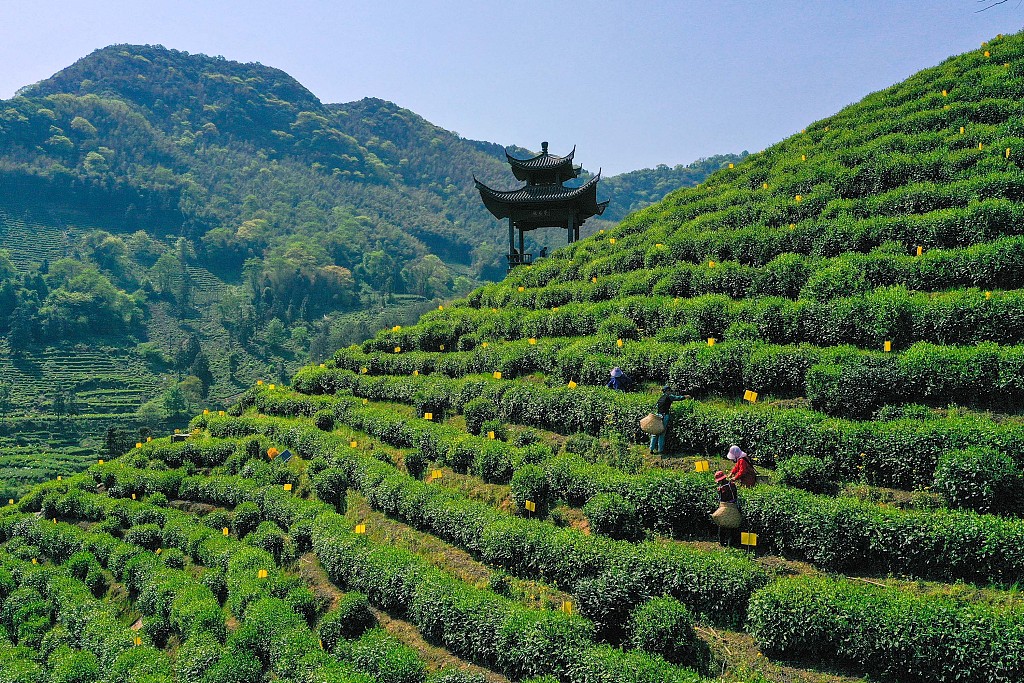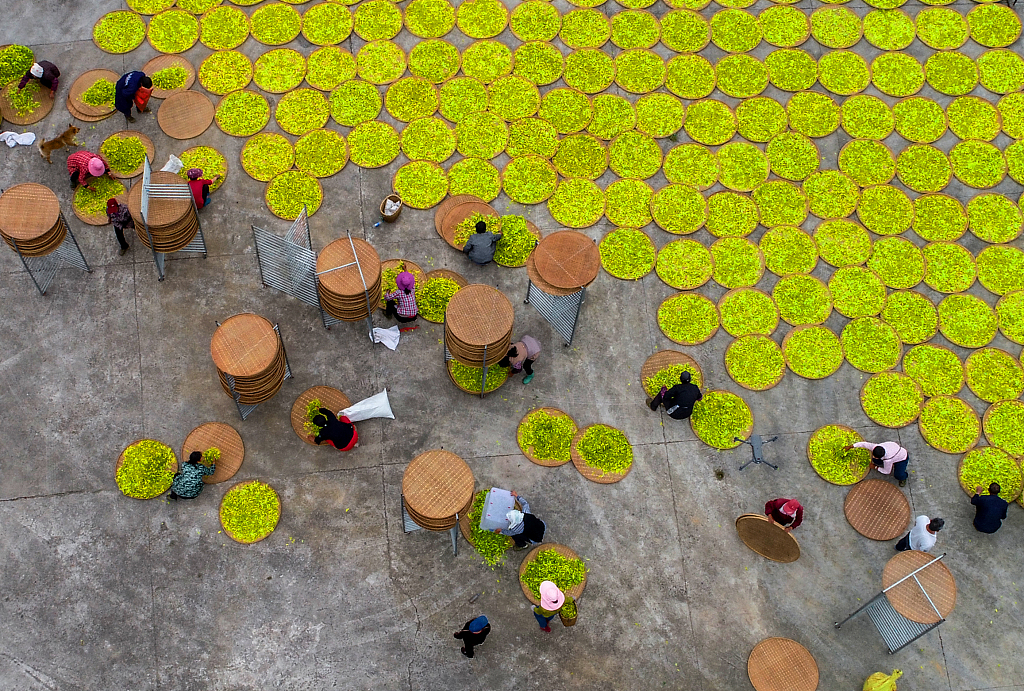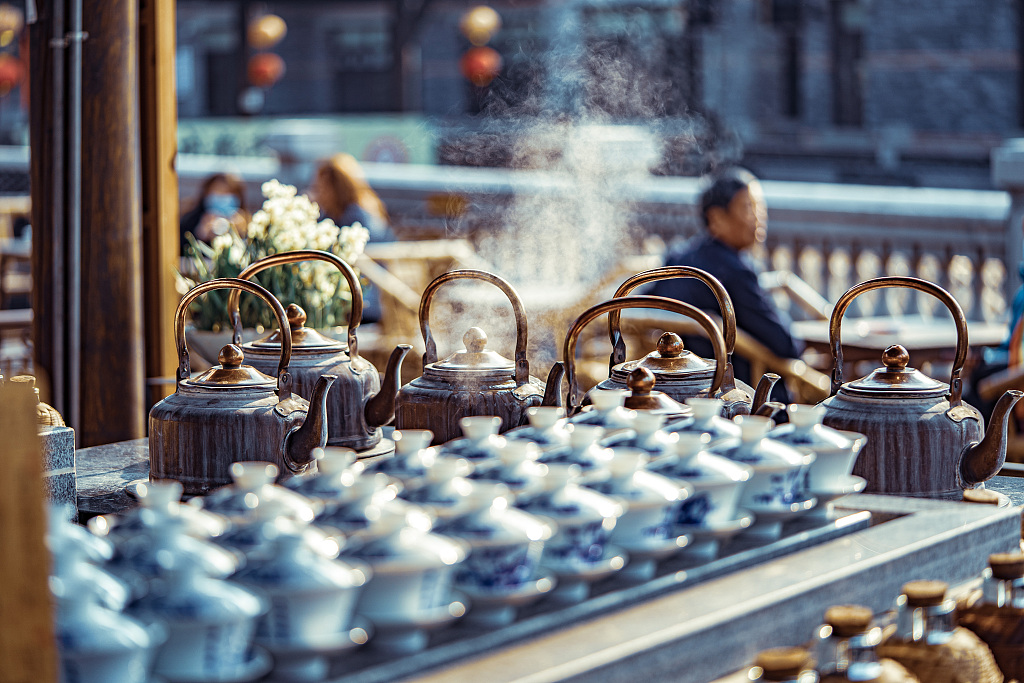
Picking tea leaves in a plantation, Huangshan City, east China's Anhui Province, April 12, 2022. /CFP
Picking tea leaves in a plantation, Huangshan City, east China's Anhui Province, April 12, 2022. /CFP
The tea that has delighted and fascinated the world for millennia has finally received top-level global recognition as a shared cultural treasure of mankind.
Traditional tea processing techniques and their associated social practices in China were added to UNESCO's Representative List of the Intangible Cultural Heritage of Humanity on Tuesday.
The status was conferred by the Intergovernmental Committee for the Safeguarding of Intangible Cultural Heritage, hosted in Rabat, Morocco. It consists of knowledge, skills and practices concerning management of tea plantations, picking of tea leaves, and the processing, drinking and sharing of tea.
According to UNESCO, in China traditional tea processing techniques are closely associated with geographical location and natural environment, resulting in a distribution range between 18°-37° N and 94°-122° E.
The techniques are mainly found in the provinces and autonomous regions of Zhejiang, Jiangsu, Jiangxi, Hunan, Anhui, Hubei, Henan, Shaanxi, Yunnan, Guizhou, Sichuan, Fujian, Guangdong and Guangxi. Associated social practices, however, are spread throughout the country and shared by multiple ethnic groups.

Drying tea in Yongzhou City, south China's Hunan Province, August 25, 2020. /CFP
Drying tea in Yongzhou City, south China's Hunan Province, August 25, 2020. /CFP
Core skills include shaqing (enzyme inactivation), menhuang (yellowing), wodui (piling), weidiao (withering), zuoqing (leaves shaking and cooling), fajiao (oxidation or fermentation) and yinzhi (scenting).
Tea-related customs are not only found across the country, but also influenced the rest of the world through the ancient Silk Road and trade routes.
As a document from the Ministry of Culture and Tourism to UNESCO explained, tea is ubiquitous in Chinese people's daily life. Steeped or boiled tea is served in homes, workplaces, tea houses, restaurants, temples and used as an important medium for communication in socializing and ceremonies such as weddings, apprentice-taking and sacrifices.

A teahouse in Chengdu City, southwest China's Sichuan Province, March 4, 2022. /CFP
A teahouse in Chengdu City, southwest China's Sichuan Province, March 4, 2022. /CFP
Since ancient times, Chinese people have been planting, picking, making and drinking tea. Tea producers have developed six categories of tea: green, yellow, dark, white, oolong and black teas. Together with reprocessed teas, such as flower-scented teas, there are over 2,000 tea products in China.
"Practices of greeting guests with tea and building good relationships within families and among neighborhoods through tea-related activities are shared among multiple ethnic groups, and provide a sense of identity and continuity for communities, groups and individuals concerned," the document said.
In China, 44 registered national-level intangible cultural heritage entries are related to tea. There are over 40 vocational colleges and 80 universities in China that have set up majors in tea science or tea culture, resulting in over 3,000 graduates specializing in tea production and art every year, according to the ministry.
China now has 43 items on the intangible cultural heritage list, continuing to be the most enlisted country in the world.
Source(s): China Daily
,Xinhua News Agency